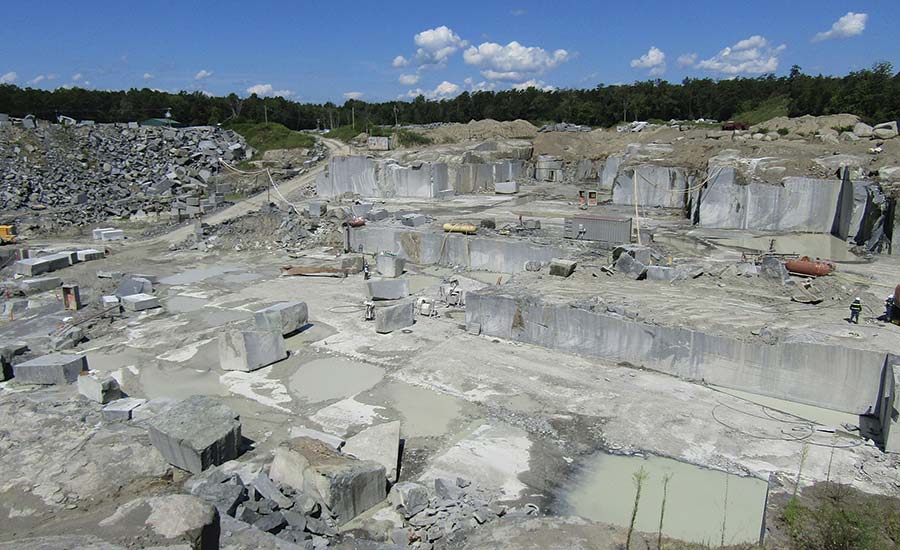Opening Natural Treasures: Granite Quarries in South Africa Unveiled
Opening Natural Treasures: Granite Quarries in South Africa Unveiled
Blog Article
Unearthing the Rich Background and Lasting Practices of Granite Quarrying
As we base on the precipice of discovering the elaborate tapestry of granite quarrying, a trip via time exposes not just the physical act of extracting stone but also the cultural and historical significance woven into the very fabric of this technique. From the ancient origins that laid the structure for modern-day quarrying strategies to the sustainable practices that are forming the future of this sector, each chisel mark on granite surface areas informs a story waiting to be uncovered (granite quarries in south africa). The heritage of granite quarrying stretches much beyond plain removal; it is a testament to human ingenuity, resilience, and the enduring allure of this stunning rock
Old Beginnings of Granite Quarrying
Dating back to old worlds, the method of quarrying granite has actually been an indispensable part of human history and building improvement. The earliest evidence of granite quarrying dates back to old Egypt, where substantial pyramids and elaborate sculptures were crafted from this resilient stone. The Egyptians utilized primitive devices to extract granite blocks from quarries, showcasing the importance of this material in their monumental building and constructions.
Moving on in background, the Greeks also made substantial payments to the quarrying of granite. The Greeks made use of granite in different building wonders, such as temples and statuaries, showing their skill in shaping and sculpting this durable rock. The Romans even more refined the strategies of quarrying granite, utilizing sophisticated tools like knives and hammers to essence and shape granite for their iconic structures.
With the centuries, the practice of quarrying granite has actually progressed, with contemporary innovations enhancing effectiveness while preserving the ageless appeal of this natural rock - granite quarries in south africa. From old people to contemporary builders, the tradition of granite quarrying proceeds to form our globe
Evolution of Quarrying Methods
The development of quarrying techniques has been noted by a continual progression in the direction of greater efficiency and precision in drawing out granite. Early quarrying techniques included hands-on labor with fundamental tools such as knives, hammers, and wedges to extract granite blocks from the planet.
In more recent times, the development of equipment changed the quarrying industry, allowing much faster removal rates and increased productivity. Technologies such as ruby cord saws, high-pressure water jets, and pneumatic drills have ended up being standard in modern quarries, enabling for precise cutting and lowered waste. Advancements in computer-controlled equipment and 3D modeling have enhanced quarrying operations, leading to minimal environmental impact and enhanced sustainability methods. As the need for granite continues to climb, the advancement of quarrying techniques stays indispensable to conference market needs effectively and sustainably.
Social Relevance of Granite
Granite holds an extensive social significance across various worlds because of its enduring visibility in building masterpieces you can check here and revered monuments. From the stunning pyramids of Egypt to the elaborate carvings of the Angkor Wat temple in Cambodia, granite has been a material of choice for expressing magnificence and long life site link in cultural heritage. In old Rome, granite columns embellished temples and public buildings, representing strength and durability. The social value of granite prolongs beyond its physical qualities; it personifies resilience, security, and eternity, making it an icon of withstanding legacies and practices.

Sustainable Practices in Quarrying
Amidst the abundant history of granite quarrying and its cultural relevance exists a growing emphasis on lasting techniques within the sector. As environmental recognition and worries about resource deficiency have enhanced worldwide, the quarrying industry has progressively embraced lasting methods to reduce its effect on the atmosphere and bordering areas.

Additionally, recovery and rehab of quarry websites post-extraction are integral to sustainable practices. By restoring quarried areas to an all-natural or beneficial state, such as creating wildlife habitats or entertainment rooms, quarriers can offset the environmental footprint of their procedures and contribute positively to the local community.
Tradition of Granite Quarrying
With a historical backdrop soaked in workmanship and industrial progress, what enduring influence has granite quarrying left on the landscape of contemporary society? The legacy of granite quarrying transcends simple removal practices; it has actually shaped building marvels, city landscapes, and cultural heritage worldwide. The long lasting nature of granite has made it a recommended option for monuments, buildings, and facilities, standing as a testament to the ability and creativity of quarry workers across generations.
Furthermore, the economic footprint of granite quarrying can not be overlooked. The market proceeds to give employment possibility and drive neighborhood economic situations in areas where granite removal prevails. It has also stimulated technological innovations in quarrying techniques and devices, bring about a lot more efficient and sustainable techniques.
In regards to sustainability, the legacy of granite quarrying includes efforts to reduce ecological impacts via improvement tasks and accountable source monitoring. By stabilizing financial interests with environmental stewardship, the sector makes every effort to guarantee that future generations can proceed to profit from this long-lasting all-natural resource.
Final Thought

Report this page